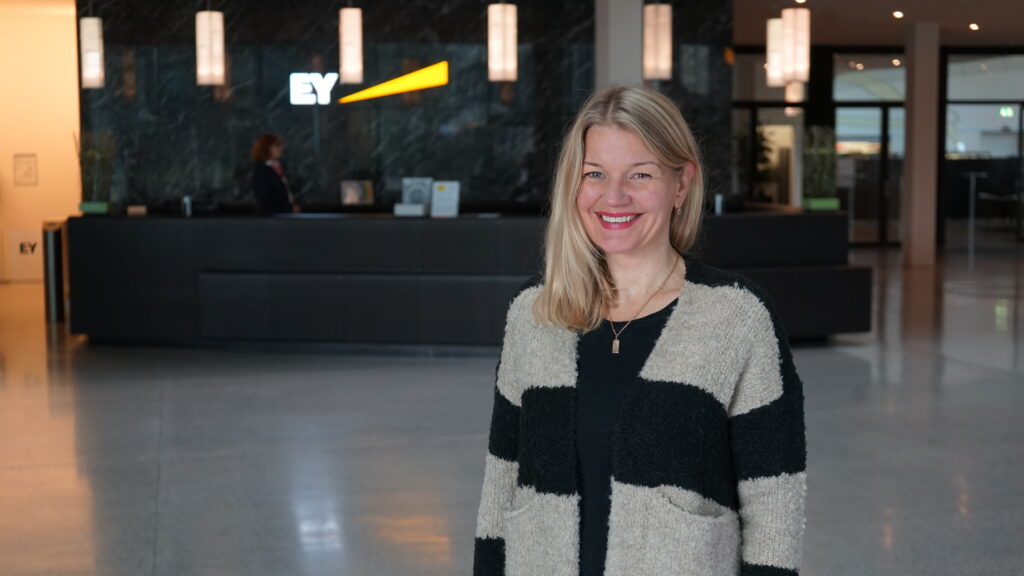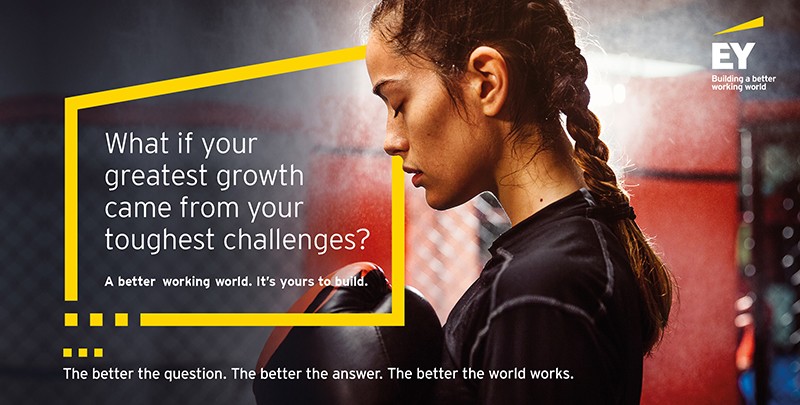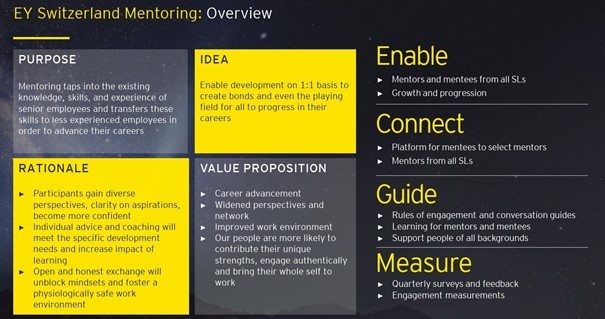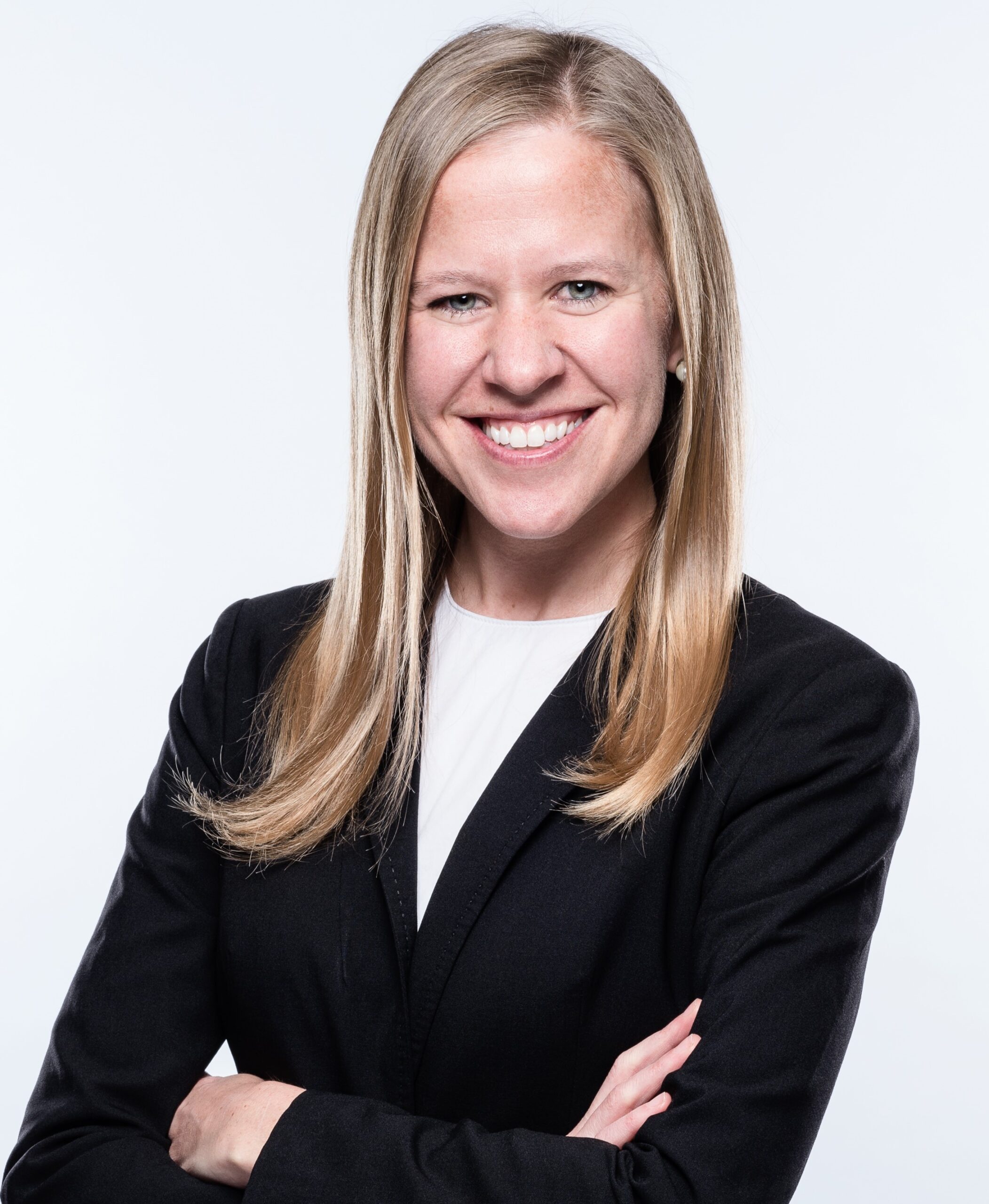NEW! How to Develop an Inclusive Mindset
Join the ride: Along a compelling learning journey, PwC teaches the human skills needed to develop an inclusive mindset.
Best Practice by EY
re-writing the leadership norms
Margit Wunder
People and Culture, Diversity, Equality and Inclusion at EY
EY’s challenge, like it is for so many other companies, is twofold: How to retain women and develop them into leaders and simultaneously how to create the best environment for women to step onto critical career rungs of the leadership ladder? How do we support women’s motivation to lead and increase the likelihood that others will recognize and encourage their efforts—even when they don’t look or behave the way their bosses do?
This best practice was first published in the Gender Intelligence Report 2021.
read the report

Becoming a leader involves much more than being placed in a leadership role and learning new skills. It involves truly knowing oneself as well as a fundamental shift in how the “ideal worker” is viewed in an organization, including the qualities and experiences people tend to associate with leaders – e.g.: more ‘male’ characteristics and behaviors have dominated the psyche.
At EY we realized that these characteristics of our business plus the perception of how a typical career “should” look, including who holds current leadership positions, often have a negative impact on the career aspirations of our younger talent.
To change this, we need a systematic approach which gives our people new perspectives and boosts their desire to lead and at the same time radically improves the probability that people in power recognize, encourage and reward potential.
Diversity and Inclusion are at the core of EY’s identity, embedded in our values and reflected in our actions. Whilst we do have aspirational goals for the proportion of women in leadership, to build a more robust pipeline we have implemented changes in 3 key areas:
Anchoring leadership in women’s core identity is a challenge in a time still at odds over whether, when, and how women should exercise authority. According to INSEAD’s theory and design for Women’s Leadership Development Programs, people become leaders by internalizing a leadership identity and developing a sense of purpose by pursuing goals that align with their personal values and advance the collective good. This allows them to look beyond the status quo to what is possible and gives them a compelling reason to act despite personal fears and insecurities.
Therefore, we enhanced the development programs which help our younger employees grow and advance in their careers, with specific modules on discovering personal purpose, values and strengths. Women first must have insights into themselves, to gain clarity on their aspirations and become more confident to exercise often innate but untapped leadership. One of our enhanced programs is delivered in three 2.5-hour virtual modules and aids people to write their purpose statement, articulate personal brand, and identify desired career experiences.
Helping our employees gain clarity on what they really want in their career and how to articulate it, in a psychologically safe environment is not only good for them, but it also improves the engagement and retention rates of our diverse talent – a self-fulfilling prophecy. Such development encourages participants to have meaningful career conversations leading to greater visibility and a broader network. With empowerment comes the likelihood to seek sponsors to support and develop them in their current and for future roles.

Successful mentoring programs are proven to have a positive impact on employees’ growth and career development, retention, strengthened leadership pipeline and sense of belonging. As such, it would seem that mentoring is a given as a key component of leadership development. Yet, many mentoring programs fail.
One of the known reasons for this is the lack of support, structure and culture that surrounds these programs. At EY, we did a thorough root cause analysis of all our past and existing mentoring programs’ successes and failures. This allowed us to design and develop a new, comprehensive, digitally enabled program that was recently launched across EY Switzerland. Each cycle has a window of just 6 months, aiming to intensely focus participants. They all receive on-boarding documents and conversation guides to optimize their time together. The key benefits of the program for mentees include the opportunity to build a wider network, develop new skills and knowledge and gain clarity and confidence on career goals. The possibility to brainstorm and ask for advice on career scenarios from supportive mentors greatly improves the chances for female, but also male, employee retention.

Mentors gain visibility to EY’s aspiring younger talent and help to develop them through knowledge transfer and advice. This brings personal satisfaction and exposure to fresh perspectives, ideas, and approaches. It’s the latter that feeds an inclusive leadership team and therefore culture. Eligible employees – both mentees and mentors – can participate in the program as many times as they wish.
To date we have 175 official mentoring couples meaning that already at the early stage of this program about 1/3 of our leaders (directors and above) have taken on a mentoring role.

“Being part of the mentoring program is such an enriching experience. I find mentorship to be such a powerful tool in supporting our colleagues to develop, reach goals and succeed in their career ambitions. The open and honest conversations help me gain new perspectives all the time and expose me to new ways of thinking. Through mentoring our young talent, I believe we promote a culture of learning, development, and growth… leading to many benefits for both the individuals involved and EY as a whole.”
If you do not have visible role models and hardly ever see compelling career scenarios being possible at your workplace, how are you to imagine your own path to leadership? All the efforts around helping people find personal purpose and map out desired career experiences, is only a wasted exercise when there is no perspective for the path that would suit you.
To address this challenge, we use the so called ‘wise’ psychological interventions – brief messages that lead to shifts in the way people understand themselves and what is possible. Our interventions are short video clips of full- and- part-time working female and male Senior Managers and Partners telling their career and life-work integration stories. We use our internal Daily News channel to broadcast the videos weekly to all employees. The aim is to offer a different perspective through these exceptional career experiences so that this becomes less of the one off and more of the norm. We want our young talent to know that crafting their path to leadership can be in harmony with work-life balance because they can recognize that in our role models. These videos can be viewed on our website.
To execute and succeed with the changes we follow the traditional change management methodology – raise awareness, create desire, build ability, provide platform to apply new skills and re-enforce.
To raise awareness, we invest in targeted communication campaigns that keep D&I top of mind. Desire is raised by helping people to view the world as it has evolved and see the challenges and most importantly what kind of people and skillsets are needed for future success. Understanding this, in return, lifts mindsets and raises intrinsic motivation to learn new behaviours and engage in initiatives.
Putting newly learnt skills and behaviours into practice is really the ‘proof in the pudding’ for EY. A good example of this can be seen in the training and development program, ‘NextWave’ Leadership, which was the subject of our 2020 Advance Best Practice. Here, we clearly spell out how new knowledge and skills around leading inclusively are applied to everything in our daily work leading to high-performance teams and improved organisational performance. Lastly, reinforcement is done continuously through communications, campaigns, visible role modeling and re-cycling of previously developed and successful initiatives.
The key success factors in this year’s implementation were executive leadership support and direct engagement – all our leaders participate and actively contribute to conversations in D&I related leadership development workshops. Members of our executive leadership team are mentors in the EY Switzerland Mentoring Program. In addition, consistency and staying focused have helped to connect everyone to the larger purpose and take an active role in bringing about positive change.
Next to the traditional KPIs of recruitment and promotion targets, we measure female retention and how people rate their preparedness to embrace diversity and the extent to which they feel free to be themselves, with a sense of belonging. The People Pulse Survey results show a gradual improvement of each of these measure over the past 18 months. Today, more than 80% of our people say they feel free to be oneself, included, supported and valued, and our female retention rate has gone up. This motivates and encourages us all to do more and be bolder.
Our efforts to improve women viewing themselves unconditionally as leaders, to be recognized as such, and ultimately to succeed, will – we are convinced – retain our talented women and ensure a diverse and inclusive pipeline of future leaders for EY.
To further unlock the power of diversity, we continue to invest in building allyships and consistently create psychologically safe environments for honest and open conversations about perceived work experiences and how to work together.
According to Amy Edmondson, Professor of Leadership and Management, Harvard Business School and author on Psychological Safety and Team Learning in the Workplace’, there is a set of leader behaviors that are proven to promote psychological safety. Her research suggests that these are: (1) being available and approachable, (2) explicitly inviting input and feedback and (3) modeling openness and fallibility. If these can become the new behavior norms for leaders in EY, the culture will naturally invite women to follow a leadership path to the top.
Stay tuned for more in next year’s Best Practice!
For more information about Diversity at EY here:
read more
Margit Vunder kindly offered her availability for an exchange to interested Advance member companies. Feel free to contact her at margit.vunder@parthenon.ey.com.
#ceoactions #inclusion #mentoring #shapetheculture
Join the ride: Along a compelling learning journey, PwC teaches the human skills needed to develop an inclusive mindset.
From storytelling to a real culture shift - learn how to use an impactful tool to change leadership behavior.
Find out how SIX takes every employee on a shared journey towards an open, inclusive and growth-oriented culture.
The transition to parenthood is a high-risk time for employees. Read how Vontobel supports and retains female leaders in the 'rush hours' of life.